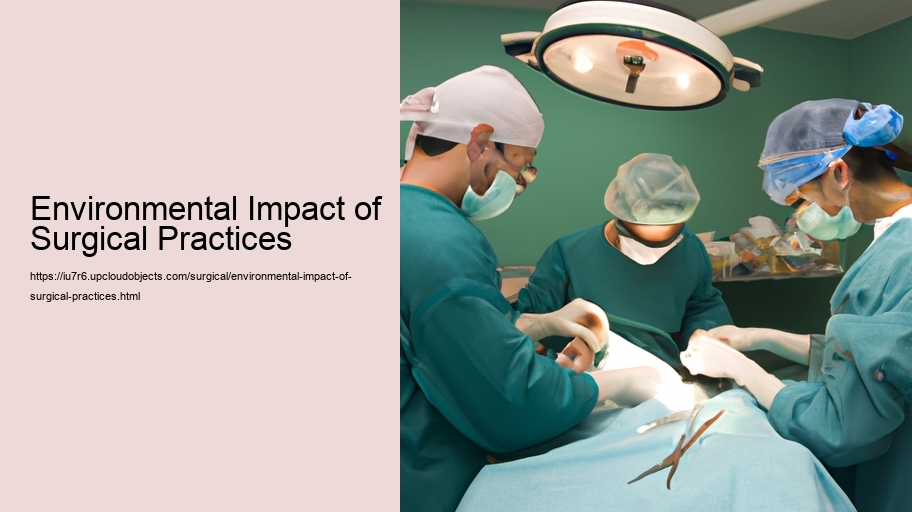The Environmental Impact of Surgical Practices: A Reflective Essay
As we navigate through the 21st century, the awareness and concern for our environment have become increasingly paramount. Not only do industries such as manufacturing, transportation, and agriculture come under scrutiny for their environmental footprints, but the healthcare sector, particularly surgical practices, also has considerable impacts that warrant attention.
The operating room (OR) is a hub of life-saving activity, where surgeons, nurses, and anesthesiologists collaborate with precision and expertise. Yet, this space is also a significant source of environmental impact within healthcare, stemming from energy consumption, waste generation, and greenhouse gas emissions.
Surgical practices are resource-intensive, consuming vast amounts of energy for lighting, heating, ventilation, and air conditioning systems necessary to maintain a sterile environment. The advanced medical equipment used during surgeries, such as electrosurgical devices, imaging technologies, and monitoring systems, further contribute to the high energy footprint of operating rooms.
Waste generation is another critical environmental concern associated with surgical practices. A single surgical procedure can result in a considerable amount of waste, including single-use plastics, packaging materials, sharps, and biological waste. The materials used in surgery such as drapes, gowns, gloves, and various surgical instruments are often disposable, designed for one-time use to prevent cross-contamination and infection. This waste not only adds to the overall volume of medical waste that must be treated and disposed of, but also represents a loss of resources that could potentially be conserved or reused.
The use of anesthetic gases in surgery also has an environmental dimension. Certain gases used for anesthesia, such as desflurane and nitrous oxide, are potent greenhouse gases. When released into the atmosphere, they contribute to the overall burden of global warming. The carbon footprint of anesthetic gases is an aspect of surgical practice that is beginning to receive more attention as the healthcare sector seeks to become more sustainable.
Moreover, the transportation of medical supplies and the commuting of healthcare professionals and patients to and from healthcare facilities also add to the carbon footprint of surgical practices. The cumulative effect of these activities contributes to air pollution and climate change.
To address these environmental impacts, a growing movement within the healthcare sector is advocating for sustainable surgical practices. This involves strategies such as more efficient use of resources, reducing energy consumption through better-designed ORs, and adopting energy-saving technologies. Waste reduction can be achieved by reprocessing and sterilizing surgical instruments for reuse, reducing the reliance on single-use items, and implementing comprehensive recycling programs.
Furthermore, the selection of anesthetic gases with lower global warming potentials and the use of regional anesthesia when appropriate can significantly reduce the carbon footprint associated with surgery. Initiatives such as telemedicine can also play a role in reducing the need for transportation, thereby decreasing emissions related to patient and staff travel.
In conclusion, the environmental impact of surgical practices is multifaceted and significant. Yet, with heightened awareness and concerted efforts, the healthcare sector has the opportunity to mitigate these impacts. By embracing sustainability, rethinking resource utilization, and incorporating eco-friendly technologies and practices, we can ensure that the noble endeavor of saving lives in the OR does not come at the expense of the planet's health. The journey toward sustainable surgery is not only a professional and ethical imperative but also a necessary adaptation for the well-being of our global ecosystem.
